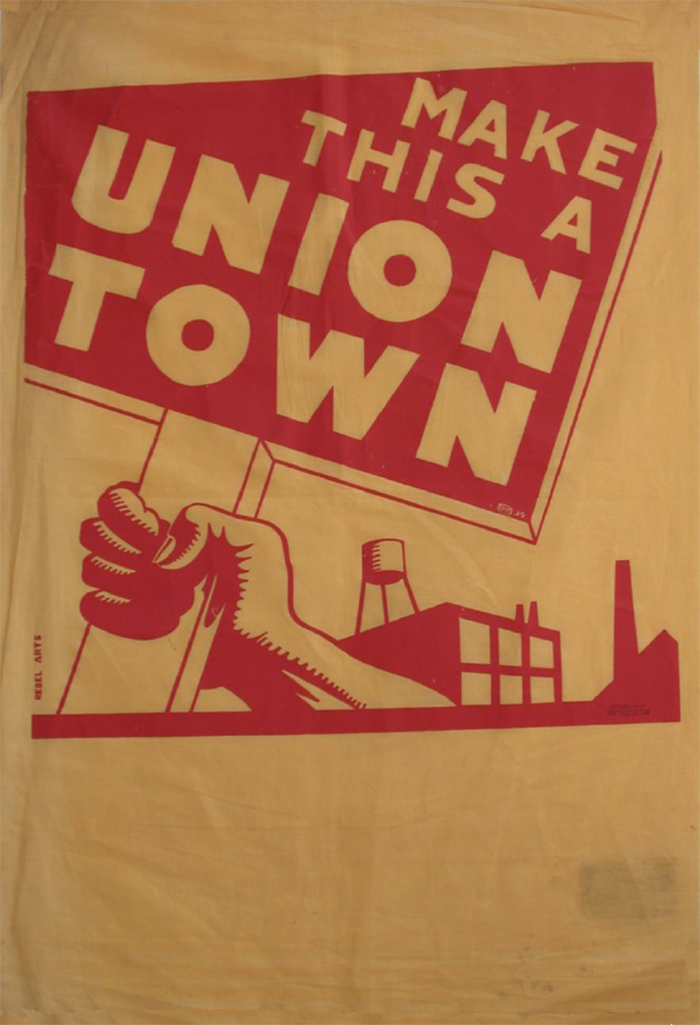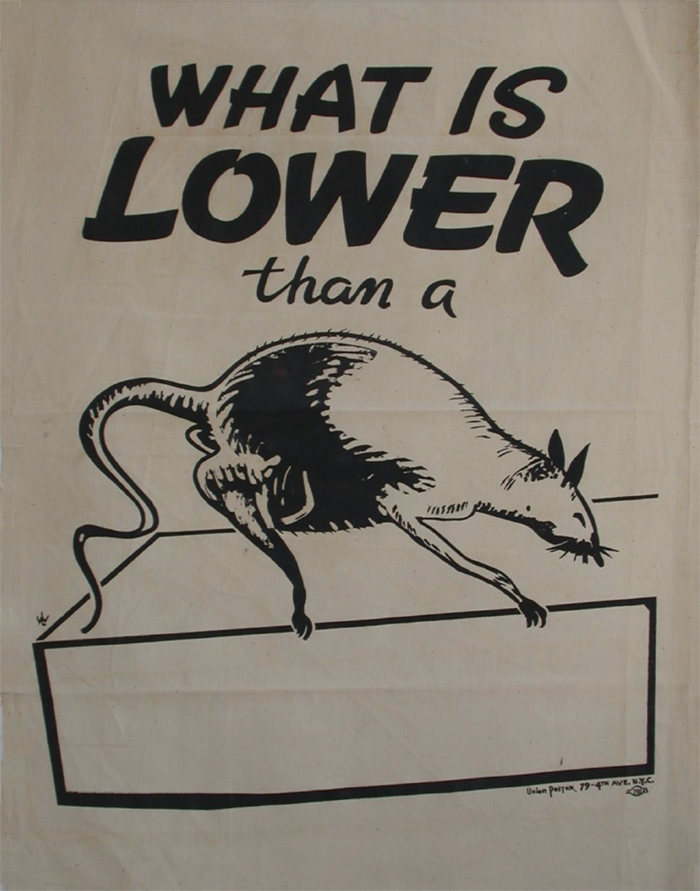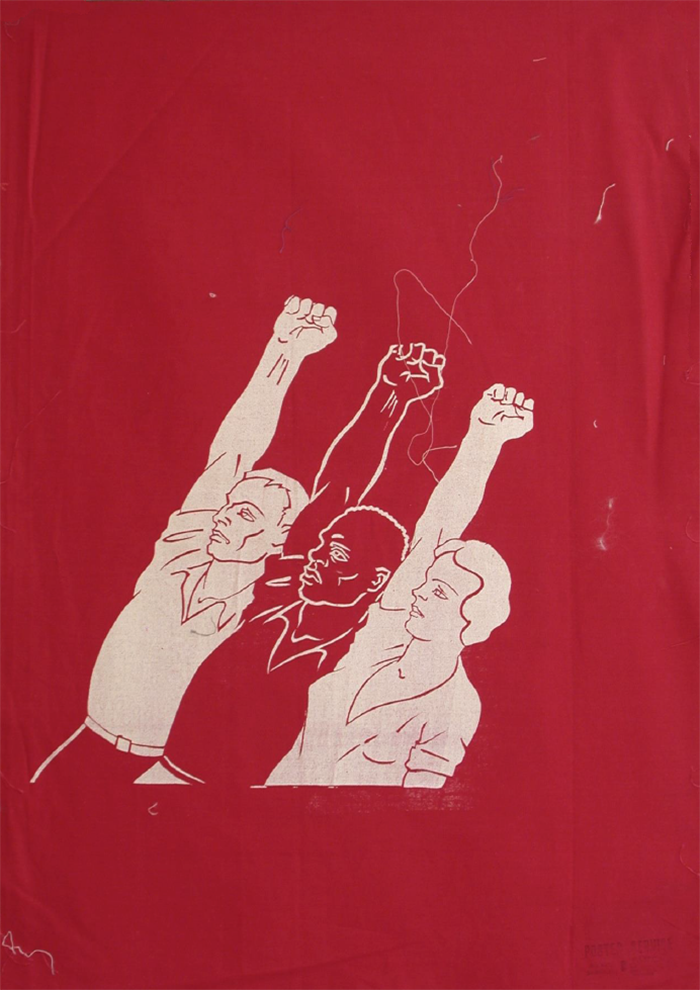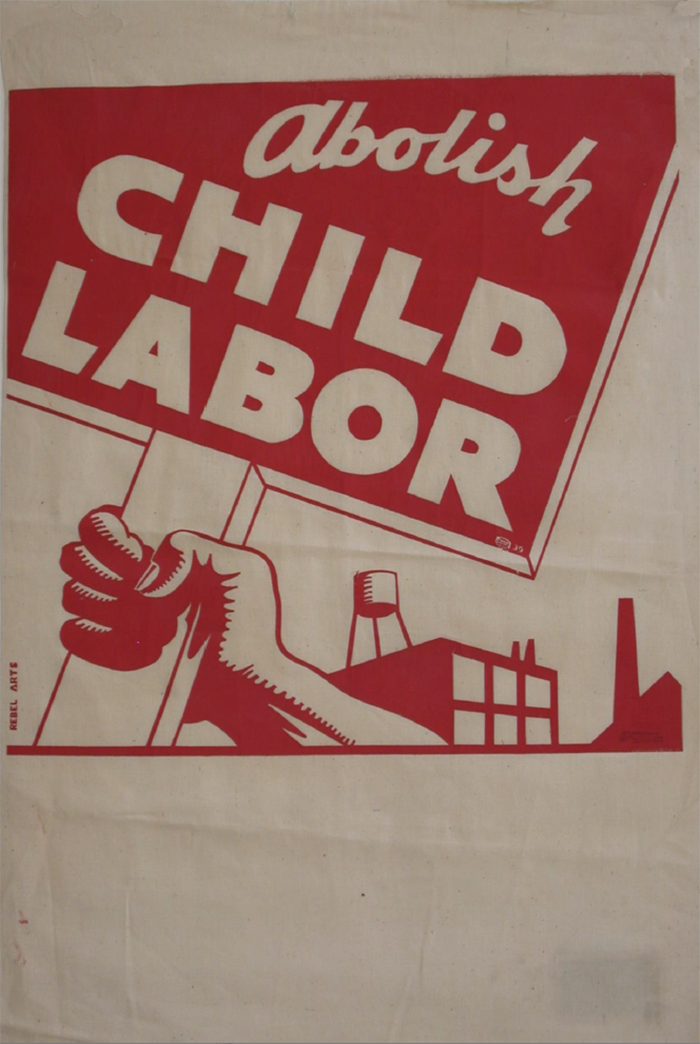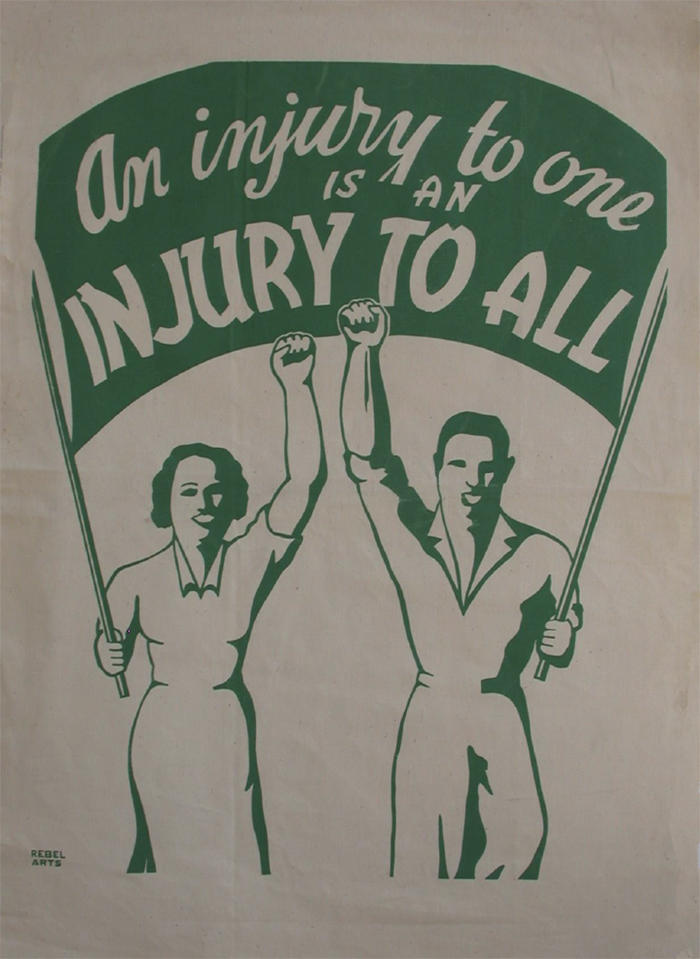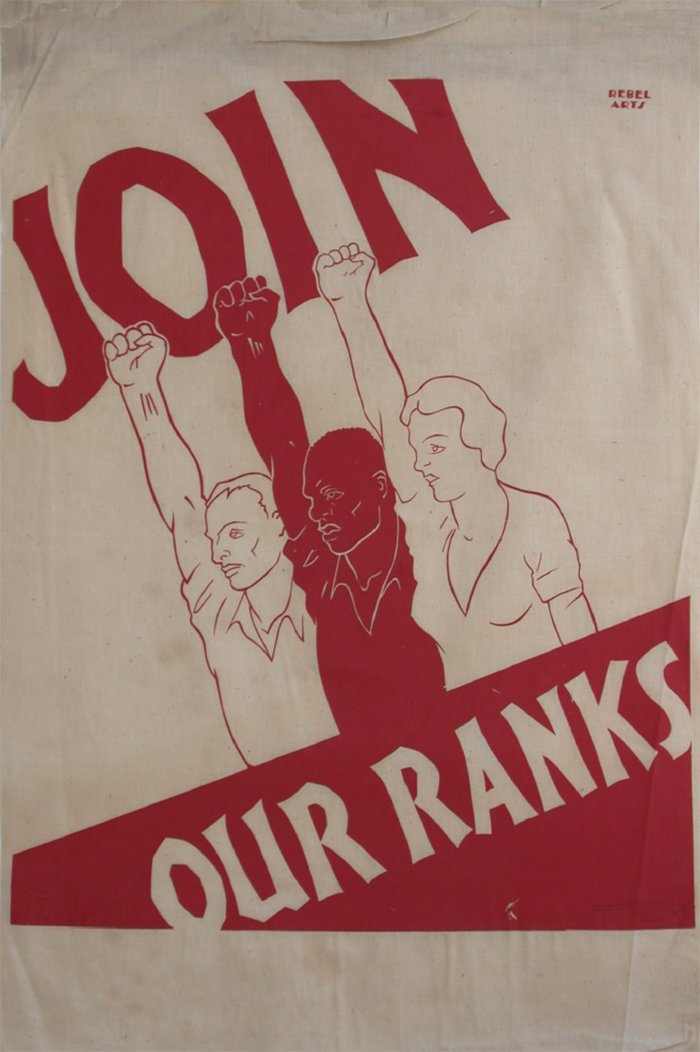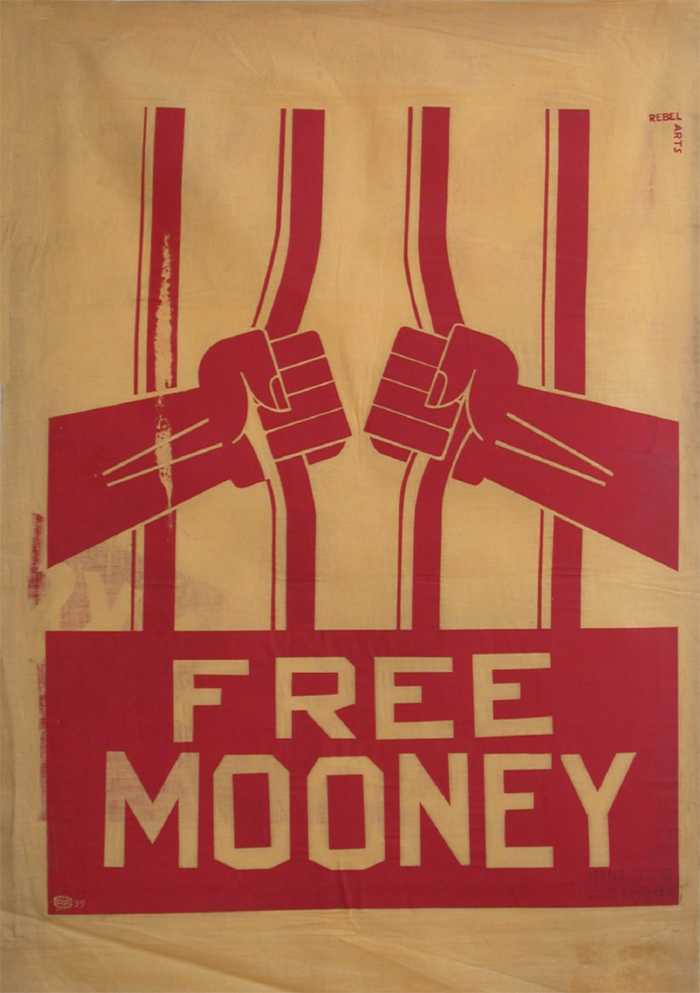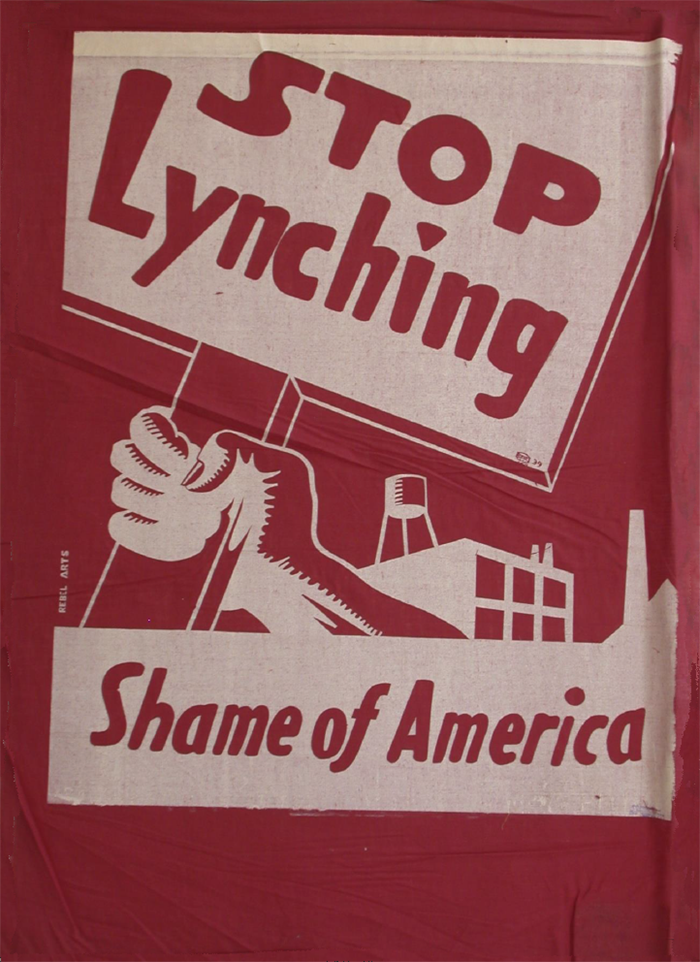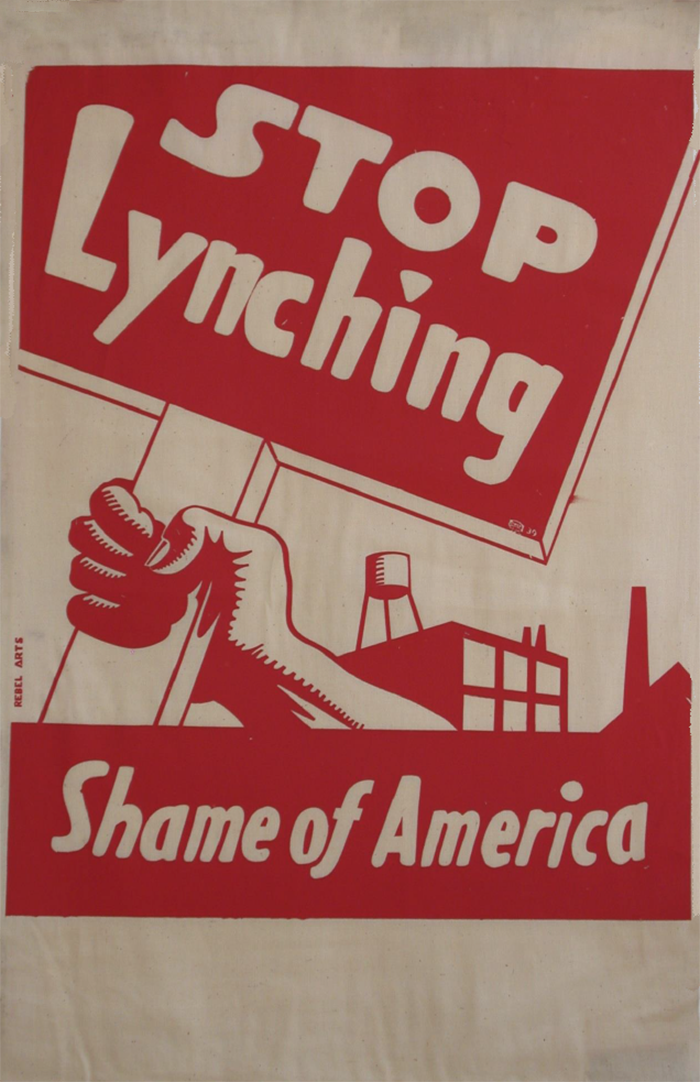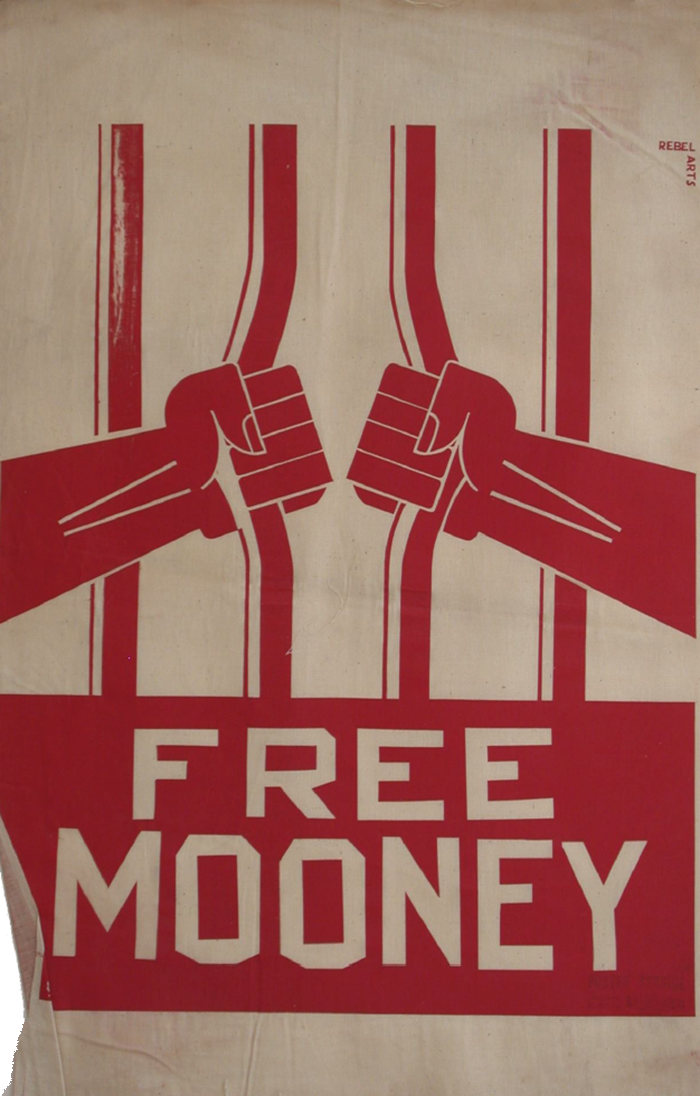It’s been my opinion that a person finds great objects mainly by being in the right place at the right time. You could call it luck, but intelligent collectors have a knack for putting themselves where the action is (or could be). Of course, having an educated eye and the confidence to say: “I’d like to buy that!” is the other part of the equation. Those who own the best things can’t hesitate when the moment comes. You rarely get a second chance.
Which is exactly what happened to New York photo dealer Steven Kasher. The renowned gallery owner was visiting a friend who mentioned that he had something he wanted Kasher to see. You can imagine the excitement when the friend showed him an incredibly rare and well-preserved collection of 1930s socialist banners and placards. Steve decided on the spot that he had to put these pieces on view for the publi. His knowledge on the subject was not deep, but he did have a good clue: the Rebel Art Group.
Through careful research, Kasher and his colleague Cassandra Johnson were able to find tidbits of information on the Rebel Art Group and piece together the story behind this rare collection. It was a history lesson in labor, unions, and the turbulence of Depression-era politics.
Here’s what we know. The banners and placards were printed in the 1930s by a company called Union Poster Service, which was located in a building on 4th Avenue in New York City. In the 1960s, the building was sold. The new owner discovered these banners and placards left behind. Not knowing what to do with them, he put them in a drawer for safekeeping. They have never been shown to the public until now.
The Rebel Art Group was a left-wing artist’s cooperative that included such figures as Harry Herzog, Alex Haberstroch, and Fairfield Porter, who created some of the designs on the posters you see here. Harry Herzog would go on to create posters and murals for the WPA; Fairfield Porter emerged as one of the most important representational painters of the 1960s and '70s. Alex Haberstroh was a Socialist Party member and close associate of Porter’s.
This extremely rare set of eighteen banners and five placards was created during the years 1936–39 and provides a representative cross-section of works designed by the Rebel Arts Group for use in Depression-era May Day parades and other events. The Greenwich Village group was the party’s strongest base for the development of arts-activism, and took its cue from the already powerful Communist arts-activism model.
Rebel Arts Group was formed in 1934 by a group of students from the Rand School for Social Science, an important institution supported by the Socialist Party, the Workmen’s Circle and various socialist-led unions. Rebel Arts emerged as the Socialist Party’s answer to the Communist's John Reed Club of New York. Led by writer and Socialist Party officer Samuel H. Friedman (1897–1990), Rebel Arts produced plays, music, and murals exploring the intersection of art and revolutionary ideology. Friedman understood the importance of the arts and culture as a means of promoting the primary objective of their political cause.
Rebel Art’s agenda was largely theatrical, offering a series of radical plays in various New York union halls. The group also sponsored a drama club, camera club, chess club, Puppet Theater and also broadcast dramas on the radio station WEVD, which took its call letters from the initials of Socialist leader Eugene V. Debs. In 1935, the group published the Rebel Song Book, an all-inclusive compilation of music. In line with the Socialist message, the book is all-inclusive, often arming old music with new, radical lyrics, folk songs, hymns, and spirituals alongside First World War staples and global socialist anthems. That same year, the group produced a monthly periodical called ARISE: Socialist and Labor Culture Magazine. The publications’ manifesto made its mission clear:
[ARISE] will take sides in the class struggle—the side of the working class. It will be a cultural forum for artists in all fields who are eager to contribute to the great movement of workers of hand and brain, which fights for the conquest of society for the benefit of the masses. Realizing that art is a weapon, and should be used by workers for the working class, ARISE will wield that weapon for the toiling masses along the whole cultural front: graphic arts, photography, literature, the drama, the dance, music and criticism.
This extraordinary collection should surely be scooped up by a museum, but you can see the Rebel Arts Group banners and placards now through February 20, 2016 at Steven Kasher Gallery, located at 515 W. 26th St., New York, NY.
++++
